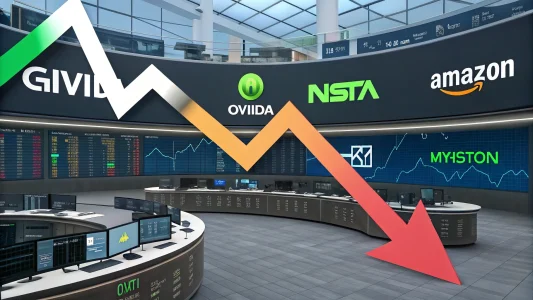Federal Reserve Chair Jerome Powell finds himself in a challenging position as economic indicators point toward stagflation—a combination of slowing economic growth and rising inflation. This marks a significant shift from Powell’s statement a year ago when he famously declared, “I don’t see the stag or the flation,” dismissing concerns about stagflation.
Economic expectations have changed dramatically since March, when the trade war intensified. Economists now consider stagflation the baseline scenario for the U.S. economy, aligning with the Federal Reserve’s own projections of higher inflation and slower growth.
Table of Contents
ToggleThe Current Economic Landscape
The economic outlook has shifted toward two concerning trends:
- Stag: Evidence of a slowing economy
- Flation: Signs of rising inflation
This economic reality creates a policy dilemma for Powell and the Federal Reserve. They must decide whether to prioritize fighting inflation by maintaining high interest rates or address the slowing economy by preparing to cut rates.
Analysts suggest a very little chance of an interest rate cut at today’s meeting. However, the real focus will be on Powell’s press conference, where he will face questions about how the Fed will navigate these contradictory economic signals.
View this post on Instagram
Powell’s Difficult Balancing Act
The Fed Chair must now balance two competing concerns. Keeping rates high might help control inflation, but could further slow economic growth. Conversely, cutting rates might stimulate the economy but risks accelerating inflation.
This situation represents a complete reversal from Powell’s position a year ago, when he confidently dismissed stagflation concerns. Now, both the Federal Reserve’s own projections and broader economic expectations acknowledge the reality of higher inflation combined with slower growth.
Market participants and economists will be watching Powell’s press conference closely for signals about which problem—slowing growth or rising inflation—the Fed considers more pressing. His words could significantly affect financial markets and future monetary policy decisions.
The outcome of today’s Federal Reserve meeting and Powell’s subsequent comments could lead to market volatility as investors interpret the Fed’s stance on these competing economic challenges.
Frequently Asked Questions
Q: What exactly is stagflation?
Stagflation refers to an economic condition characterized by simultaneously high inflation and stagnant economic growth. This combination creates a challenging environment for policymakers since traditional tools to address one problem often worsen the other.
Q: Why is Powell’s press conference important?
Powell’s press conference matters because his statements will provide insight into whether the Federal Reserve is more concerned about inflation or an economic slowdown. This guidance will help markets understand future interest rate decisions and the overall direction of monetary policy.
Q: How might financial markets react to Powell’s comments?
Financial markets could experience volatility depending on Powell’s emphasis. If he focuses more on inflation concerns, markets might anticipate continued high interest rates, potentially pressuring stocks. If he emphasizes economic slowdown worries, markets might expect future rate cuts, which could boost equities but raise inflation concerns.

















